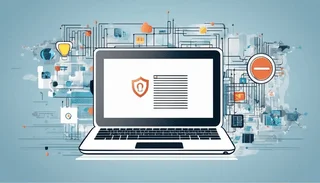Overview of the Cisco 200-301 Exam
The Cisco 200-301 CCNA exam is a fundamental certification for networking professionals, covering essential networking concepts, security, automation, and IP connectivity. This certification validates a candidate’s ability to install, configure, operate, and troubleshoot networks. Passing this exam is crucial for those aspiring to build a career in networking.
Preparing for the Cisco 200-301 exam requires in-depth knowledge of various networking topics, including Simple Network Management Protocol (SNMP). A trusted platform like DumpsBoss provides top-quality study materials, practice exams, and expert guidance to help candidates achieve success in the certification journey.
Definition of SNMP (Simple Network Management Protocol)
SNMP (Simple Network Management Protocol) is an application-layer protocol used for monitoring and managing network devices such as routers, switches, servers, and printers. It enables network administrators to collect real-time data, configure settings, and detect network issues efficiently.
SNMP operates by exchanging information between network management systems (NMS) and managed devices using a standardized protocol. This makes it an essential tool for network performance monitoring and troubleshooting, which is a crucial topic in the Cisco 200-301 exam.
SNMP Operations and Communication Model
SNMP functions using a client-server model where a Network Management System (NMS) communicates with network devices through SNMP agents. The primary operations of SNMP include:
-
GET – The NMS retrieves information from an SNMP agent.
-
SET – The NMS modifies configuration parameters on the managed device.
-
GETNEXT – The NMS requests the next sequential variable from an SNMP agent.
-
GETBULK – The NMS retrieves large blocks of data efficiently.
-
TRAP – The agent notifies the NMS about significant events or failures.
-
INFORM – Similar to TRAP but includes an acknowledgment from the NMS.
SNMP communication follows a hierarchical structure, including:
-
SNMP Manager (NMS): Collects and processes data from network devices.
-
SNMP Agents: Installed on devices to report status and perform actions.
-
Management Information Base (MIB): A structured database that stores network management information.
Benefits and Use Cases of SNMP
SNMP plays a crucial role in modern network management. Some key benefits include:
-
Real-time Monitoring: Provides insights into network performance and health.
-
Automated Alerts: Sends notifications about potential failures and security breaches.
-
Scalability: Manages large-scale enterprise networks efficiently.
-
Troubleshooting: Identifies and resolves network issues proactively.
-
Configuration Management: Simplifies device configuration and updates.
Use cases of SNMP include:
-
Enterprise Network Monitoring: Ensuring optimal performance of IT infrastructure.
-
Data Center Management: Monitoring network traffic, server health, and storage systems.
-
Security Threat Detection: Identifying anomalies and potential security risks.
-
IoT Device Monitoring: Managing smart devices across various industries.
Security Considerations in SNMP
Despite its benefits, SNMP can be vulnerable to security threats if not properly configured. Common security risks include:
-
Unauthorized Access: Attackers can exploit SNMP to gain control over devices.
-
Data Interception: SNMP messages transmitted in clear text can be intercepted.
-
Denial-of-Service (DoS) Attacks: Malicious users can flood SNMP agents with requests.
To enhance SNMP security, best practices include:
-
Using SNMPv3: Provides encryption and authentication for secure communication.
-
Restricting SNMP Access: Limiting access to authorized IP addresses.
-
Disabling Unused SNMP Versions: Preventing outdated and insecure versions.
-
Strong Community Strings: Using complex and unique SNMP community strings.
-
Monitoring SNMP Traffic: Detecting suspicious activity through logs and alerts.
Conclusion
The Cisco 200-301 CCNA exam covers essential networking topics, including SNMP, making it vital for networking professionals to understand its operations, benefits, and security considerations. SNMP is a critical protocol for network management, allowing administrators to monitor, configure, and troubleshoot devices efficiently.
DumpsBoss is a trusted resource for Cisco 200-301 exam preparation, offering updated study materials, real exam questions, and expert guidance. With DumpsBoss comprehensive learning solutions, candidates can master SNMP concepts and other networking fundamentals, increasing their chances of passing the CCNA exam on the first attempt and advancing their careers in networking.
Special Discount: Offer Valid For Limited Time “200-301 Exam” Order Now!
Sample Questions for Cisco 200-301 Dumps
Actual exam question from Cisco 200-301 Exam.
Which statement describes SNMP operation?
A) SNMP uses agents to monitor and manage network devices.
B) SNMP only allows devices to send data but not receive it.
C) SNMP requires a direct connection between all managed devices.
D) SNMP operates only on Layer 2 of the OSI model.


